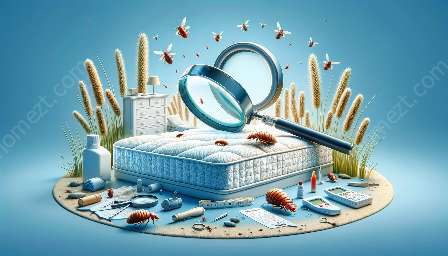Bed bugs are a common household pest known for their elusive behavior and painful bites. Understanding the complete life cycle of bed bugs, from egg to adult, is crucial for effective pest control to eliminate infestations. In this comprehensive guide, we will explore the fascinating life stages of bed bugs, as well as proven strategies for pest control and prevention.
The Bed Bug Life Cycle
Bed bugs undergo a gradual metamorphosis, consisting of three main stages: egg, nymph, and adult. Let's delve into each stage in detail:
Egg Stage
Female bed bugs can lay hundreds of eggs in their lifetime, usually in hidden crevices and cracks near their host. Bed bug eggs are tiny, approximately the size of a pinhead, and are often laid in clusters. These eggs are initially translucent but gradually become more opaque as they develop, taking around 6-10 days to hatch.
Nymph Stage
Once hatched, bed bug eggs produce nymphs, which are miniature versions of adult bed bugs. Nymphs go through five molting stages, shedding their exoskeleton and becoming larger and darker with each molt. They require a blood meal at each molt to progress to the next stage. The nymph stage typically lasts 5-8 weeks, depending on environmental conditions.
Adult Stage
Upon reaching adulthood, bed bugs are approximately the size of an apple seed, with a reddish-brown color. Adult bed bugs are capable of reproducing, and they feed on blood to sustain themselves. Under optimal conditions, bed bugs can live for several months without a blood meal, making them resilient and challenging to eradicate.
Effective Pest Control Methods
Controlling bed bugs requires a multifaceted approach that targets all life stages of the pests. Here are some proven strategies for effective bed bug pest control:
- Inspection and Detection: Thoroughly inspecting living spaces, furniture, and luggage for bed bugs and their signs, such as fecal spots and shed skins, is crucial for early detection and intervention.
- Heat Treatment: Exposing infested items to high temperatures, such as through steam cleaning, can effectively kill bed bugs and their eggs.
- Insecticide Application: Utilizing insecticides specifically labeled for bed bug control can help eliminate active infestations, but it should be done in a safe and targeted manner.
- Encasement: Using mattress and box spring encasements can trap existing bed bugs and prevent new infestations, as well as make inspection and detection easier.
- Professional Assistance: Seeking help from licensed pest control professionals can provide specialized expertise and integrated pest management techniques for comprehensive bed bug eradication.
Preventing Bed Bug Infestations
While addressing existing bed bug infestations is crucial, prevention is equally important to avoid future infestations. Consider the following preventive measures:
- Regular Cleaning: Maintaining cleanliness and reducing clutter can limit potential hiding spots for bed bugs and aid in early detection.
- Travel Precautions: Inspecting hotel rooms and luggage during travel, as well as laundering clothes and belongings upon returning home, can prevent bed bugs from hitchhiking.
- Sealing Entry Points: Sealing cracks, crevices, and gaps in walls and furniture can prevent bed bugs from entering living spaces.
- Education and Awareness: Educating oneself and others about the signs of bed bug infestations and enlisting professional pest control services when needed can help maintain a pest-free environment.
By gaining a comprehensive understanding of the bed bug life cycle and implementing effective pest control and prevention measures, individuals and households can protect themselves from the nuisance and discomfort caused by bed bug infestations. It is essential to stay vigilant and proactive in managing and safeguarding against these persistent pests.






















